(2838 products available)












































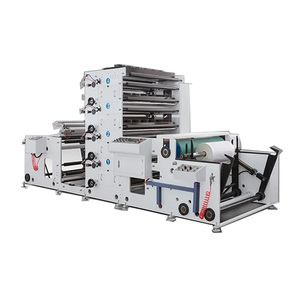
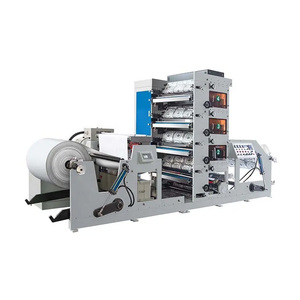
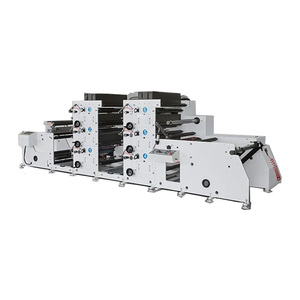

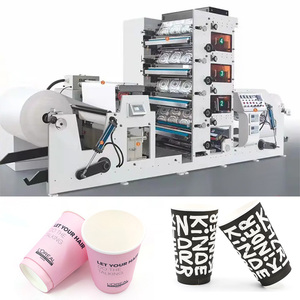
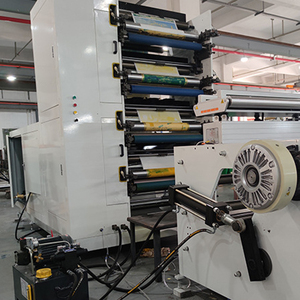










































































































The small gravure printing machine is known for its diversity. Therefore, people in different industries and businesses can find types catering to their ideal application. Below are the common types available in the market.
This press is an advanced and efficient option for long-run projects. This occurs because it offers high-speed printing on flexible materials like films and foils. It uses engraved cylinders to transfer ink. Therefore, this type is ideal for packaging, labels, and wallpaper printing.
The chrome-plated cylinder machine features a solid chrome cylinder. This finish provides durability and a long lifespan, enhancing color precision. Therefore, this makes it suitable for businesses focusing on quality and consistently in printing. The machine is needed in various sectors, including packaging and decorative prints.
The single-print color machine is an entry-level option for small tasks. It is efficient when working with jobs requiring only one ink. This makes it suitable for basic packaging, such as plastic bags and labels. Users benefit from simple operations while ensuring quality print for small-scale production.
The multi-color variety can be ideal for projects that require intricate designs. It combines several colors in one pass to produce vibrant, dynamic graphics. This type excels in packaging and labels that demand full colors. Users enjoy the benefit of efficiency with fewer setups needed for complex designs.
Often, people consider the small gravure printing machines only for commercial applications. But they also have a wide range of usage in industrial settings. Below are the industrial applications of these machines.
The small gravure printing machines play an essential role in creating flexible packaging for food and pharmaceuticals in industrial settings. It offers precision and speed when printing intricate designs on thin films. This makes it an ideal choice for producing vibrant, high-quality packaging that ensures product safety and extends shelf life.
For laminate flooring or decorative surfaces, small gravure machines help achieve the necessary aesthetic appeal. They print authentic wood, stone patterns, and many other designs onto protective surfaces. This makes them invaluable for manufacturers in the flooring and interior design industries who want to maintain high visual standards.
In the electrical industry, gravure printing machines help produce insulating materials. These machines ensure that fabrics and other materials receive accurate application of insulating inks. These inks are vital for ensuring safety and function in electrical components. Simply put, reliability is the main feature of printed insulation used in electronics and wiring.
In sectors like aerospace and automotive industries, these gravure machines underpin the production of composite materials. They print resin onto glass or carbon fibers to ensure uniformity in the layering process. This leads to materials with superior strength and lightweight properties. They are vital in high-performance applications like aircraft components and structural parts in many vehicles.
These labels are used for containers in industries like cosmetics, food, and chemicals. In these industries, the small gravure printing machines print directly onto the labels. This creates durable, high-quality labels that offer efficiency in production. They serve especially in industries with large container usage, like jars and bottles.
When making a purchasing choice, buyers must consider product specifications. This is because investors tend to choose products based on the knowledge they have acquired from various publications. Here are the technical specifications and features of the small gravure printing machines. These are the things to keep in mind.
The small gravure print machine usually achieves speeds between 60 and 300 meters per minute. It ensures efficiency for both small and large production runs. In addition, the printing speed greatly affects the output capacity and turnaround time.
Many small printing machines commonly integrate one to ten printing units. The units allow for flexibility in design complexity. Simply put, these units enable the use of multiple ink colors in a single process. It makes them ideal for printing vibrant, detailed graphics on items like packaging.
Most gravure printers use chrome-plated cylinders. However, some advanced models use stainless steel or engrave cylinders with a diamond for added durability. The material used affects the precision and quality of the engraved design. This ensures that the prints are consistent over time.
The maximum web width on gravure printing machines ranges from 200 to 1,200 millimeters. This specification depends on the model used by the user. The wider the web, the more efficient it is in large-scale printing tasks. Meanwhile, narrower webs are ideal for projects that require quick execution.
Many small gravure printing machines use advanced PLC control systems. These systems provide simple operations for setting and tracking printing parameters. This ensures consistent results with minimal adjustments. Furthermore, this feature reduces the learning curve for machine operators when running the machine.
The gravure printing machines come with diverse customization options. They help the machines to meet the specific needs and more detailed requirements of the users. Below are the most popular customization options for small gravure printing machines.
Users can customize the small gravure printing machines to use specific brand colors. This ensures the printed materials achieve color accuracy. It also helps maintain consistency on the brand’s visual identity. The option is particularly needed by companies with color-specific projects or those seeking to improve the general output quality.
Gravure printing machines commonly use water-based, solvent-based, or UV-curable inks. Buyers should pick one that is compatible with the substrates they print. Customizing ink types ensures the prints have the needed adherence and vibrancy. It enhances the machine's versatility in different printing tasks.
The rollers in the gravure printing machines commonly use rubber or ceramic. Each material offers a certain benefit. For instance, ceramic rollers afford high durability and use for heavy tasks. On the other hand, rubber rollers are more affordable and efficient for less intensive tasks. The material to use depends on the projects' work demands.
Customizing the printing configuration allows users to modify the number of color stations and the arrangement. It helps accommodate specific needs. With such flexibility, users can handle multi-color designs or simplify setups for tasks that are not so complicated. This option allows the machine to work as needed for diverse projects.
Selecting the right small gravure printing gadget requires considering several factors. Here are those key factors to keep in mind.
Small businesses normally require a machine that offers flexibility and efficiency. In doing so, the business can handle various printing tasks without overspending. On the other hand, large companies usually need high-output machines. In other words, they will handle the projects in a large number of quantities.
If the print volume is low, investors should settle for compact gravure printing machines. They are ideal for low-demand tasks as they will provide easy operation and save space. Meanwhile, large print volumes require high-capacity machines. These machines are built to handle greater workloads without compromising quality.
Investors should consider the substrates they will use in the printing while selecting a machine. Not all machines are compatible with all materials. That is why there are machines for plastic, paper, and other materials. The machines also customize the inks to improve adhesion to the substrate.
The budget will determine which printing machine investors will settle for at the end of the day. Luckily, there are affordable options for small businesses. However, there are also high-end printing machines that come with more features and higher efficiency.
A1. The small printing machines require regular cylinder cleaning. The cleaning helps remove the ink residue after each use. The users also need to inspect the cylinder for wear and recoat them if necessary. In addition, the users should change the machine's oil to keep the moving parts in good condition. The machine's parts also need to be replaced every so often.
A2. These machines come with automatic features. For instance, the machines have PLC systems that help manage printing parameters. Therefore, these systems improve efficiency and consistency. People also appreciate these machines because they have rapid changeovers and few manual tasks. These factors reduce the machine's operation complexity, making it more user-friendly.
A3. The machines are useful in various industries, including flexible packaging and laminate production. They have high efficiency and provide quality print. That is why they are preferred in production environments requiring quick color applications.
A4. The main difference between gravure printers and litho printers is the method of ink application. Gravure machines transfer ink using engraved cylinders. This makes them ideal for large productions. Meanwhile, litho printers use plates. It makes them suitable for small tasks that require quick color applications.
A5. Buyers should consider the print quality they will get from the equipment. In addition, they need to select equipment that is compatible with the substrate they will use. The machines should also have advanced features that will help easy operation and enhance efficiency.